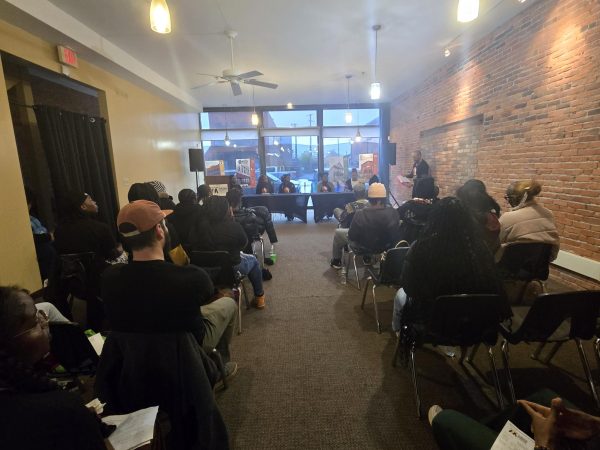Build Smart NY aims to reduce emissions, save millions
The air around campus will soon be much cleaner thanks to a new partnership between the New York Power Authority and the State University of New York.
Governor Andrew Cuomo announced last month that SUNY Buffalo State is one of 10 campuses participating in the program dubbed “Build Smart NY.” The program is expected to save SUNY $3.5 million annually, eliminate 21,000 tons of greenhouse gas emissions, and save enough energy to power some 3,600 typical homes.
Cuomo’s “Build Smart NY” initiative seeks to reduce energy use at state-owned facilities by 20 percent by the year 2020. The energy efficiency installations include new lighting, heating and ventilation upgrades, new electric motors and replacement of outdated boilers and chillers.
SUNY Chancellor Nancy L. Zimpher said that SUNY is looking forward to supporting the governor’s initiative through implementing these improvements on campuses.
“SUNY is deeply committed to rehabilitating, renovating, and building its facilities in the most cost-effective and energy-efficient manner, and every new building constructed on a SUNY campus in the last decade has been designed to LEED [Leadership in Energy and Environment Design] silver standard or higher,” Zimpher said during last month’s announcement. “As a result of our partnership with the New York Power Authority, energy savings projects have been initiated at campuses across New York, achieving significant improvement in energy efficiency.”
Dan Herr of Buffalo State’s Facilities Planning Department said that many of these changes are long overdue.
“A major portion of the buildings on campus were constructed in the 1960s and are now exceeding 50 years old,” Herr said. “By investing money to improve the buildings and systems and upgrading their energy efficiency, all of the various departments on campus will benefit from a better environment with improved and more efficient lighting, better heating, cooling and more controllability of spaces.”
The project is expected to cost $80 million across the ten campuses involved and there is worry among students that they may have to foot some of the bill.
“This money has to come from somewhere,” Joshua Teufel said, a senior computer information systems major. “I’m concerned that students will be taking on a good portion of this expense over time.”
Herr does not anticipate students will see a rise in tuition or fees as a direct result of these upgrades and expects that the project costs will likely be offset by the reduction in the total cost of energy used.
“Some items, such as lighting replacements should have a payback of less than a year, whereas others such as chiller or pump replacements may take 5-10 years,” Herr said. “The College will work with both the NYPA and the New York State Energy Research and Development Authority to obtain all appropriate funding, financing programs, and incentive opportunities available to assist with offsetting the cost of the program.”
SUNY’s 2010-2011 energy study revealed that Buffalo State is in the lower third of energy use intensity. According to Herr, Buffalo State uses about $4 million worth of energy each year and those costs come out of the college’s annual operating budget.
Herr said Buffalo State has already shown improvements since SUNY’s original study. All SUNY campuses are required to meet Cuomo’s energy use reduction requirement by April 1, 2020.
Email: provenzano.record@live.com
Twitter @MikeVProvenzano






